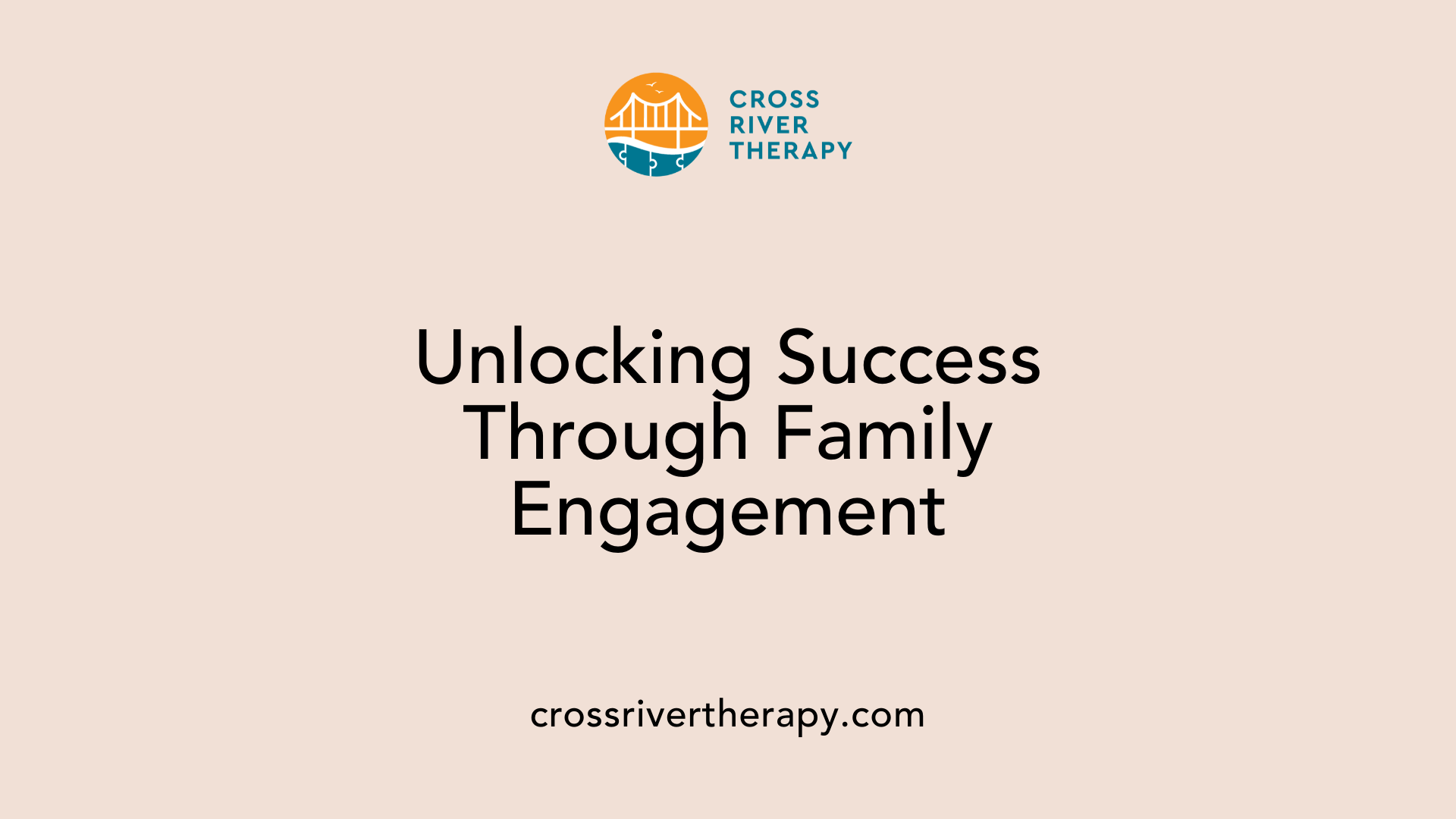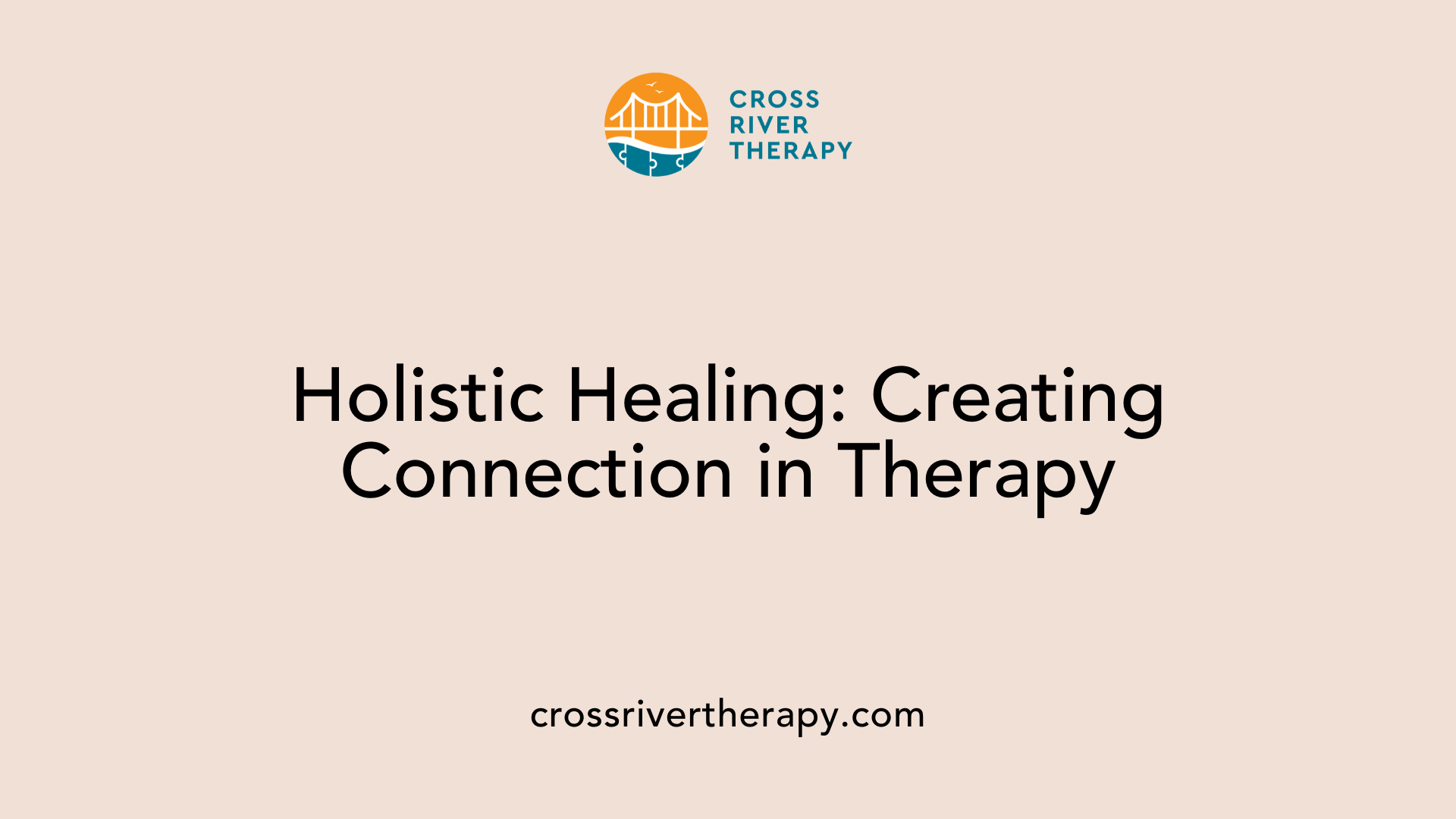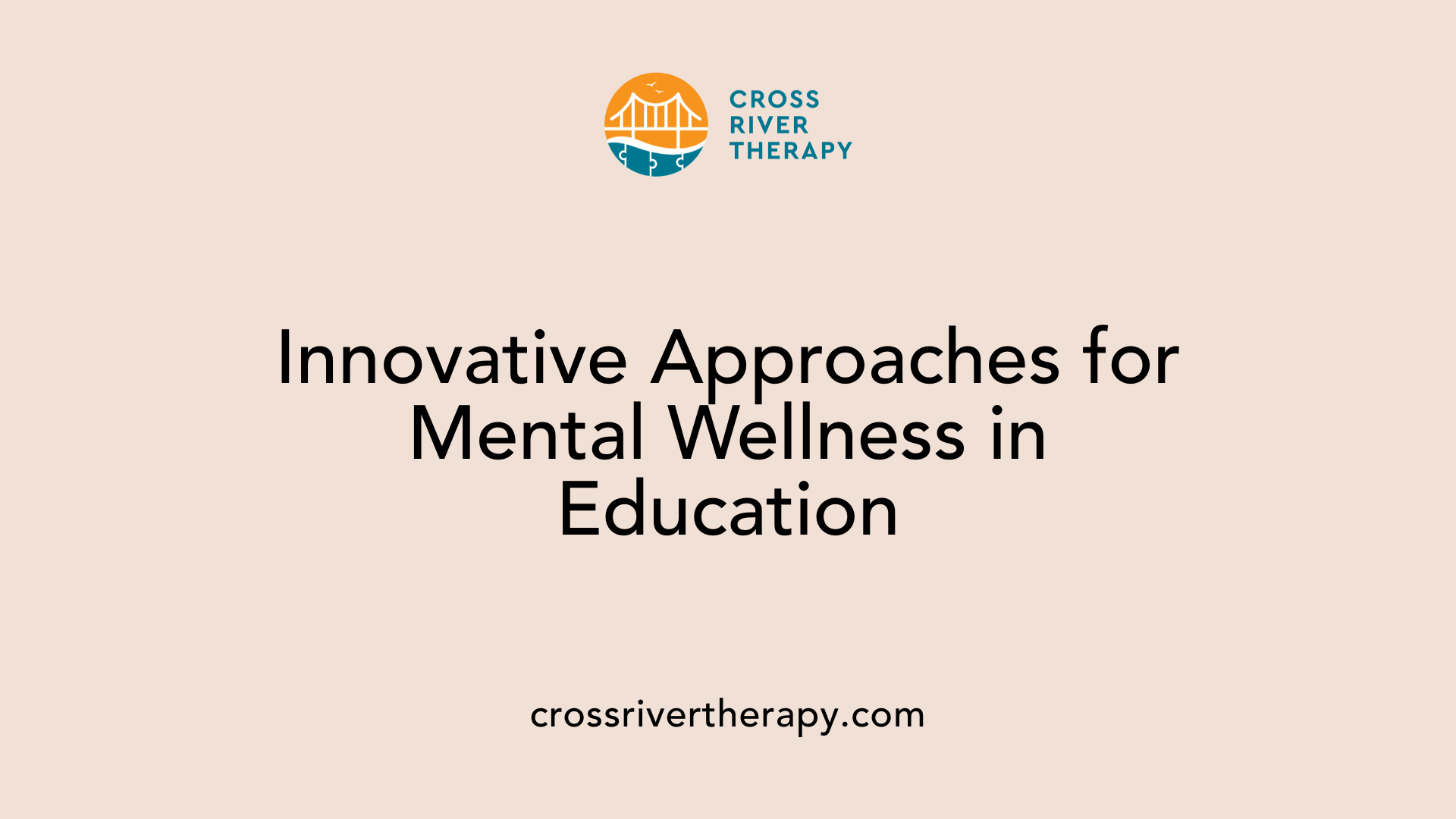The Importance of Collaboration Between Therapists, Parents, and Schools
Uniting Forces: How Parents, Schools, and Therapists Enhance Children's Success
Exploring Collaborative Efforts
In the complex landscape of children's education and mental health, collaboration between therapists, parents, and schools is pivotal. This partnership not only supports emotional and behavioral health but also fosters academic achievement and social development. By examining best practices and successful models of collaboration, stakeholders can better understand and implement strategies that ensure children receive comprehensive and effective support across all aspects of their lives.
The Role of Collaboration in Education

Why is collaboration with parents important in education?
Collaboration with parents is crucial in education because it significantly enhances students' academic success by allowing teachers to tailor instruction to meet individual needs. Communication between parents and schools fosters mutual understanding and creates a supportive environment that positively affects students' overall well-being and resilience.
Moreover, when parents are involved, students often experience a boost in self-esteem and motivation. Celebrating student achievements together encourages greater engagement in learning, making students more likely to participate actively in their education.
Collaborative goal-setting between parents and teachers not only supports students' socio-emotional development but also promotes academic advancement. By establishing shared objectives, families and educators can work harmoniously, addressing the unique needs of each child.
Ultimately, strong partnerships among parents, schools, and communities are vital for tackling systemic challenges. This collaboration helps promote equity and foster social improvement, ensuring that all students receive the support they need to thrive in various aspects of their lives.
| Key Aspects of Collaboration | Benefits for Students | Outcomes for the Whole Community |
|---|---|---|
| Tailored instruction and support | Enhanced academic performance | Improved social cohesion |
| Improved communication channels | Boosted self-esteem and motivation | Equitable access to resources |
| Collaborative goal-setting | Greater engagement in learning | Strengthened community ties |
Parental Involvement in Therapy

Why is it important for parents to be involved in their child's therapy?
Parental involvement in a child's therapy is crucial as it fosters trust and security, encouraging the child to open up more readily. When parents actively participate in the therapeutic process, they help create a collaborative environment. This collaboration aids in establishing healthy communication patterns between families and therapists.
Involvement directly correlates with improved mental health outcomes. Children with engaged parents are often happier, more successful, and develop better coping skills for stress. This nurturing of self-esteem and motivation is vital for the child's overall quality of life. Additionally, active parental engagement allows for crucial discussions about therapy, helping to normalize mental health conversations and alleviate any stigma.
Benefits for mental health and overall quality of life
The benefits of parental involvement extend beyond the therapy room. Children whose parents are actively engaged tend to show enhanced emotional and social competencies, improving their academic success and behavioral responses.
Moreover, parents often provide valuable insights into their child’s needs, which can significantly enhance therapeutic strategies tailored to individual circumstances. Effective communication and teamwork between parents, teachers, and therapists ensure that supportive actions align across various environments, leading to a cohesive approach that supports the child's mental health and learning outcomes.
Research highlights significant mental health challenges faced by youth today, making the role of parents in therapy not only beneficial but essential to effectively addressing these issues. By participating in therapy, parents can empower their children toward healthier futures, underscoring the importance of collaboration in promoting positive mental health.
The Impact of Collaborative School Counseling

What are the benefits of collaboration in school counseling?
Collaboration in school counseling is essential for enhancing student success and promoting educational equity. By partnering with parents, teachers, administrators, and community leaders, school counselors create a robust support network addressing both academic and personal development needs of students. This support network is crucial in tackling various challenges students face.
Key Benefits of Collaborative School Counseling:
- Enhanced Student Outcomes: Increased collaboration leads to improved student achievement, attendance, and resilience. When counselors work actively with families and community resources, students receive consistent support across different settings.
- Empowered Families: Parents involved in the educational process contribute valuable insights into their child's learning style and needs, fostering tailored instructional methods by teachers.
- Strengthened School Climate: Active involvement of families and community stakeholders leads to a more positive school environment, directly influencing student motivation and overall happiness.
- Holistic Support: Collaboration promotes a comprehensive approach whereby not only academic skills are targeted, but also emotional and social skills, ensuring children develop as well-rounded individuals.
Impact on student success and educational equity
Collaboration among school counselors, families, and community organizations directly impacts student success and educational equity. It enables counselors to address educational disparities and support students with diverse needs effectively. The involvement of parents and community resources ensures tailored interventions that cater to each student’s unique circumstances.
Measurement of Success Through Collaboration:
| Metrics | Impact | Examples of Collaborative Actions |
|---|---|---|
| Student Engagement | Increased participation | Regular parent-teacher meetings |
| Academic Achievement | Higher grades | Shared goals in Individualized Education Plans |
| Emotional Well-being | Improved mental health | School mental health programs integrated with family resources |
Overall, these collaborative efforts culminate in more effective school counseling programs tailored to meet the diverse needs of students, promoting both equity and success in education.
Therapeutic Collaboration: A Multi-stakeholder Approach

Why is collaboration important in therapy?
Collaboration in therapy establishes a strong therapeutic alliance between therapists, clients, and families. This alliance promotes trust and open communication, essential ingredients for effective healing.
With mutual respect and shared objectives, family members can become active participants in the therapeutic process. This engagement fosters a sense of ownership over treatment, allowing for tailored strategies that address individual needs. Research indicates that such collaboration enhances treatment outcomes significantly.
Involving parents, teachers, and clinicians allows for a holistic understanding of a child's needs, making it easier to apply therapeutic skills across different settings—home, school, and therapy. This seamless transition is particularly crucial for children with developmental challenges, as it supports consistent behavior management and emotional support.
Role of various stakeholders in therapeutic settings
- Therapists: They guide and facilitate the therapeutic process, providing specialized knowledge and strategies tailored to the child's needs.
- Parents: Their involvement in therapy offers insights into the child’s behavior and helps reinforce learned skills at home, promoting better outcomes and enabling them to advocate effectively for their child’s needs.
- Teachers: By collaborating with therapists, teachers can implement therapeutic techniques in the classroom, ensuring that emotional and behavioral strategies are consistent across environments.
- School Counselors: They play a crucial role in bridging communication gaps among therapists, parents, and teachers, ensuring everyone is aligned with the child’s developmental goals.
| Stakeholder | Role in Therapy | Impact on Child Outcomes |
|---|---|---|
| Therapists | Provide expertise and personalized treatment | Enhanced problem-solving and coping skills |
| Parents | Share insights and reiterate strategies at home | Increased consistency and emotional support |
| Teachers | Incorporate therapeutic strategies into learning | Improved academic performance and behavior |
| School Counselors | Facilitate communication, organize meetings | Stronger partnerships and cohesive support |
This multi-stakeholder approach not only addresses the academic needs of children but also ensures their emotional and psychological development, affirming the necessity of a coordinated effort in fostering effective therapy.
Modern Models of Collaborative Care in Schools

Implementation of Collaborative Care Models in Schools
Collaborative Care (CC) models are increasingly gaining traction in educational settings. These models facilitate teamwork among therapists, educators, and parents, ensuring that mental health support is integrated within the school environment. Implementing CC involves aligning services with multi-tiered systems of support (MTSS) that address emotional, behavioral, and academic issues.
Schools play a vital role in mental health service delivery, reaching almost all children and adolescents. By utilizing CC, schools can provide timely and accessible mental health interventions, lowering barriers related to transportation and costs often associated with traditional therapy settings.
Benefits of These Models for Mental Health Services
The benefits of such collaborative approaches are extensive:
- Broader Access: CC models enhance accessibility to mental health services, providing immediate support to students in familiar environments.
- Improved Outcomes: Studies indicate that integrated mental health services significantly enhance youth depression and overall mental health outcomes.
- Holistic Development: Collaboration fosters an environment that addresses not just academic needs but also emotional and behavioral aspects, catering to the holistic development of students.
- Parental Involvement: Parents gain vital insights into their child’s needs, promoting unified support across home and school settings.
Overall, the integration of CC models can transform how schools address mental health challenges, creating supportive learning environments conducive to student success.
Strategies for Effective Collaboration
Best Practices for Successful Partnerships
Collaboration among school counselors, parents, and community stakeholders is vital for the success of students. Some effective strategies include:
- Regular Communication: Establish consistent contact between parents, teachers, and therapists to foster understanding and alignment in goals.
- Goal Setting and Shared Planning: Collaborate on creating Individualized Education Plans (IEPs) that integrate academic and therapeutic objectives, ensuring everyone is on the same page.
- Engagement Initiatives: Organize parent-teacher meetings and family engagement events to build relationships and discuss student progress.
Methods to Overcome Common Barriers in Collaboration
Overcoming barriers is essential to successful collaboration. Here are some approaches:
- Clear Roles: Define specific responsibilities for parents, teachers, and therapists to minimize misunderstandings and confusion.
- Cultural Competence: Respect and acknowledge cultural differences, adapting communication styles to individual family needs.
- Training and Resources: Provide training for therapists and educators on effective communication strategies, empowering them to engage families constructively.
Effective collaboration relies on trust, respect, and open dialogue among all parties, ultimately supporting children's educational and emotional development.
Building a Supportive Community for Children's Development
Impact of community and school partnerships
Collaboration among schools, families, and community organizations significantly enhances student outcomes. Engaged parents contribute critical insights into their child's learning and emotional needs, fostering closer ties with teachers and support staff. This teamwork not only boosts academic achievement and attendance but also fosters resilience and career development. When schools prioritize communication with families and local resources, they create an environment where students feel supported both at home and in school.
Role of integrated services in holistic child development
The role of integrated services, such as mental health support within schools, is paramount in addressing the diverse needs of children. Such services proactively engage families, providing tailored interventions that cover academic, social, and emotional challenges. By facilitating on-site therapy options, schools reduce barriers to accessing care, creating a connected support system for youth. This integrated approach ultimately ensures that children's developmental, educational, and mental health needs are met, paving the way for healthier, more successful futures.
| Aspect | Description | Outcome |
|---|---|---|
| Community Partnerships | Collaboration between schools and community services | Enhanced support for students' needs |
| Integrated Mental Health | On-site mental health services for students | Improved accessibility and engagement |
| Family Involvement | Active participation of parents in educational processes | Higher academic performance and resilience |
Harnessing the Power of Collaboration
In forging strong partnerships among therapists, parents, and schools, we create a network of support that addresses all facets of a child's development — from academic achievements to emotional resilience. The insights and strategies provided here underscore the importance of such collaborations, highlighting that when we work together, we significantly enhance the potential for children to thrive both inside and outside the classroom. As communities and schools continue to evolve, maintaining and refining these collaborative approaches will remain crucial in ensuring the ongoing success and well-being of our children.
References
- The School Counselor and School-Family-Community Partnerships
- Collaborative Therapy is Essential to Children's Mental Health
- Collaboration: How does it work according to therapists and parents ...
- Collaborative Care in Schools: Enhancing Integration and Impact in ...
- Collaboration between parents and SLTs produces optimal ...
- The Role of Parent-Teacher Collaboration - Care Counseling
- [PDF] 9 Therapist Roles in Facilitating the Collaborative Learning Process
- Satisfaction With the Collaboration Between Families and Schools
- Enhancing Collaborative Between Teachers, Parents, and ...



